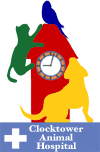| |
| Common Telephone System Jargon & Features
|
ACD:
Automatic Call Distribution (ACD) is a method of shuttling calls to pre-planned
telephones or groups of phones. Used extensively in call centers, ACD is usually used in high call volume
situations.
CO lines:
These are the incoming phone lines from your local telephone company.
DID:
Direct Inward Dialing (DID) numbers are virtual numbers that do not have a
physical line associated with them. They allow special phone numbers to ring to one phone or a group of
phones directly, bypassing the auto attendant or receptionist. They are usually provisioned over a PRI or
individual DID trunks.
Extensions-Stations:
The station is the telephone on your desk which is an extension of the phone
system. These phones are tied to the particular phone system you own. You cannot
use a Norstar phone with an Avaya phone system nor can you plug these phone in at home.
The number of stations varies by the telephone system and any installed expansion modules.
Hunt Group - Roll Over Lines:
The phone company manages how your phones ring. If your main line is in use and
a new call comes in the call is diverted to the next line in the hunt group. Make sure that your fax line
is not in the teleco hunt group as your callers will get a fax tone if all other lines are in use.
KSU or PBX:
Often used synonymously the KSU (key service unit) and the PBX (private branch
exchange) are the two types of phone systems generally available. The KSU was traditionally a small system
which allowed telephones to
share phone lines and permitted very basic telephone switching functions. However, today the KSU has
expanded in functionality to provide many of the features of the larger PBX.
The true PBX acts as a telephone company switch but located at a large company's site.
The Norstar KSUs have most of the features of a true PBX.
Ports:
Think of a port as an entry or exit "port" of your
telephone system. Each telephone extension requires a port as does each POTS line.
Voice Mail systems also take at least two ports. A two port voice mail system will
allow for two users to simultaneously access the voice mail system. If one user is leaving
a message and someone else is accessing their voicemail box then the system is tied up.
This is an excellent reason to consider a four port voice mail system like the Call Pilot.
A good rule of thumb is to have 2 ports dedicated to voice mail for each 10-12 employees.
POTS lines:
Plain Old Telephone Service. Nothing fancy... just a phone line.
Voice Mail-Auto Attendant:
Voice Mail is the feature that has become an essential in business
communications. Gone are the days of pink slips flying around your desk and messages lost and
never returned. Voice mail assures that messages are delivered and also provides other features
like call recording.
An Auto Attendant is the digital receptionist you are familiar with.
It is responsible for the "Thanks for calling Acme Supply Company. For Sales....",
message that keeps you pounding on the keyboard in frustration. Properly used, however, the
Auto Attendant can be a real help to your company and your callers by handling over-flow calls
when the receptionist is busy or swamped and by directing callers to the appropriate department.
VoIP:
Voice Over Internet Protocol (VoIP) is the transmission of voice traffic over the internet.
One of VoIP's great selling points is its ability to save money on toll charges. The telephone companies have begun
to use the VoIP jargon when trying to sell you particular package of voice/data services. While technically VoIP
they still charge you a per unit fee and other toll charges using these lines. If you have any questions about
VoIP or "Split" or "Fractional" T-1 services call us and we will help you sort it out.
Frequently Asked Questions:
One common pitfall when purchasing a telephone system is underestimating your company's
future needs. For example, the Compact ICS is the perfect phone system
for doctor's offices, small real-estate companies, retail locations and other sites that will
never grow past 24 users (don't forget voice mail can take up to 4 ports (extensions)) and require
more than 8 phone lines.
If you do foresee the need for greater expandability than the Modular ICS
is the correct system. The MICS tops out at 270 users and supports multiple T-1 PRI trunks.
Q: What is the maximum
number of phones and lines that I can have telephone system?
A: Your phone system documentation should explicitly state the
number of phones and lines that can be hooked into it. Generally, the limitations will be in the system name.
For example a 8x16 will accommodate 8 phone lines and 16 phones.
Q: Is my phone system expandable?
A: Basic Key Systems are not usually expandable. Some may allow for expansion such as voice mail and other
features but there is frequently a hard limit to it's capabilities.
Q: If I have 6 employees and phones I must need 6 lines right?
A: No. One of the main features of any KSU or PBX is its ability to pool lines.
It is very unusual for every employee to be on the phone at the same time. Obviously, the fewer phone lines a company
has the higher the likelihood that all lines will be in use at the same time. But a good estimate is 1 phone
line for every 3-4 full-time staff.
|
|
 |
  |
 |
Emergency Service
If you require immediate attention and don't know where to turn call Orion.
Our emergency services calls can usually be scheduled within 2 hours.
Call Us |

|
|
|
 |


|
 Clocktower Animal Hospital Clocktower Animal Hospital
This Herndon Vets needed an affordable alternative to a new phone system. Refurbishing was the answer.
More Info
|
 |

Telecommunications issues are complex and only growing more so.
If you need a simple explanation to confusing telecom issues
without the jargon, just contact us.
Call Us
|
 |
|
|
|